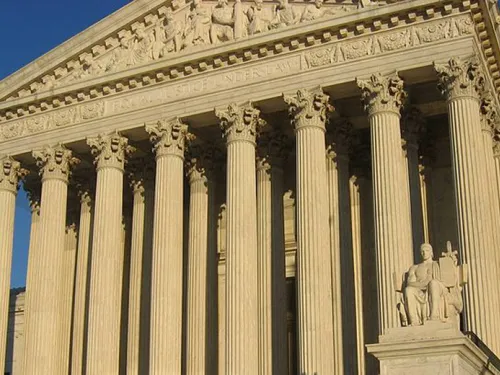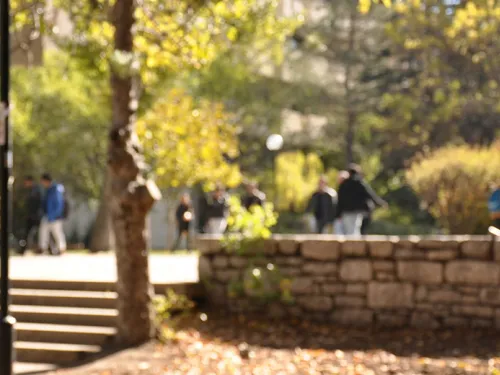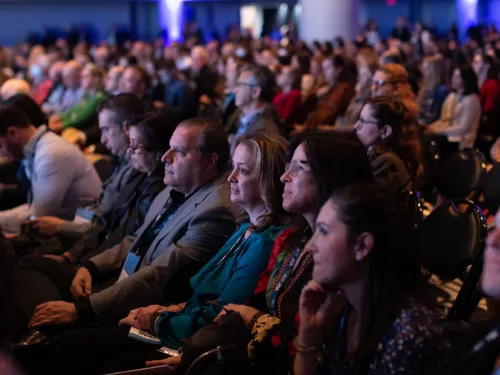The Pyramid of Hate illustrates the prevalence of bias, hate and oppression in our society. It is organized in escalating levels of attitudes and behavior that grow in complexity from bottom to top. Like a pyramid, the upper levels are supported by the lower levels; unlike a pyramid, the levels are not built consecutively or to demonstrate a ranking of each level. Bias at each level reflects a system of oppression that negatively impacts individuals, institutions and society…
Search Results
15 Results

This parent/family discussion guide helps families engage in a discussion about the October 7, 2023 Hamas attack on Israel, its aftermath and how families can help.
Definitions of antisemitism, anti-Zionism and anti-Israel bias.
Social media is a hotbed of antisemitism, anti-Israel hate, Holocaust denial and distortion and other conspiracy theories. Check out our tips on how to engage and disengage in the fight against antisemitism, anti-Israel bias, and hate on social media.

Table Talk: Family Conversations about Current EventsThe CROWN Act is a law that forbids discrimination based on hair texture and hair styles. CROWN stands for: “Create a Respectful and Open Workplace for Natural Hair.” Hair discrimination impacts Black people, especially Black women and girls in schools and workplaces who wear hair styles such as locs, braids, twists, Bantu knots, afros and natural hair. They are punished by discriminatory workplace and school dress codes and…

January 27, 2022 Using children’s literature to teach about Black history and the Black experience is a great way to open the door to discussions about these experiences and milestones. These books include important insights into Black history, culture, accomplishments, notable people, historical and current day injustice and how that injustice was and continues to be confronted and overcome. Our recommended books include…

Table Talk: Family Conversations about Current EventsJuneteenth, also known as “Juneteenth Independence Day,” “Emancipation Day,” "Jubilee Day," or “Freedom Day,” is an annual holiday that marks the end of slavery. The holiday’s name is a blending of the words “June” and "nineteenth." Juneteenth commemorates the day in history that Union General Gordon Granger arrived in Galveston, Texas and informed the enslaved…

The topic of antisemitism is complex, deeply historical and has a myriad of elements to it. Antisemitism is not only about defaming and attacking the Jewish community; it is a symptom of a larger issue. While antisemitism has sometimes escalated to violence as we saw at the Tree of Life Synagogue shooting, it more often appears in subtler ways, such as insensitive remarks or “jokes” that are brushed off, or negative stereotypes that go unchallenged.
Today, Jewish young people…
The Pyramid of Hate illustrates the prevalence of bias, hate and oppression in our society. It is organized in escalating levels of attitudes and behavior that grow in complexity from bottom to top. Like a pyramid, the upper levels are supported by the lower levels; unlike a pyramid, the levels are not built consecutively or to demonstrate a ranking of each level. Bias at each level reflects a system of oppression that negatively impacts individuals, institutions and society…

November is Native American Heritage Month, which was first declared by President George H.W. Bush in 1990. The month provides an opportunity to commemorate the rich and diverse cultures, traditions and histories and acknowledge the important contributions of Native American/Indigenous people. It is also an important time to educate the general public, as well as young people in schools, about the bias, discrimination and unique challenges faced by Native American/Indigenous people…
For Educators | High School
A study guide for high school teachers who are using From Broken Glass: My Story of Finding Hope in Hitler’s Death Camps to Inspire a New Generation in the classroom.
Help students better understand the experiences author Steve Ross talks about in his book.
About From Broken Glass
Steve Ross was eight years old when the Nazis invaded his Polish village, forcing his family to flee. He spent his next six years in a day-to-day struggle to survive…

For parents, families and young people Topic SummaryIn recent years, there has been a lot of attention paid to the diversity of children’s books, shining a light on the lack of diversity and amplifying the need for more children’s and young adult literature that reflects our multicultural society. In 2014, an organization named We Need Diverse Books formed, following a regularly trending hashtag with the same name (#WeNeedDiverseBooks) that helped bring attention to the issue. We…

In August 2017, ‘Unite the Right’ convened one of the largest and most violent gatherings in decades in the U.S. that brought together white supremacist groups including the alt-right, neo-Nazis and the Ku Klux Klan. The gathering’s stated goal was to save the statue of Confederate General Robert E. Lee, because like other places in the South, there are still monuments celebrating leaders of the Confederacy. Hundreds gathered on Friday evening and Saturday to broadcast their…

Collection of educational resources for teaching about Black History Month

For Educators Because discussions of race and racism are part of our public discourse, educators feel a sense of responsibility to bring these topics into their classrooms—because young people want to be part of the conversation and should be. If handled effectively, these discussions provide opportunities for timely learning. Below are suggestions and strategies for having classroom conversations with young people about race and racism. Prior to these discussions and…









